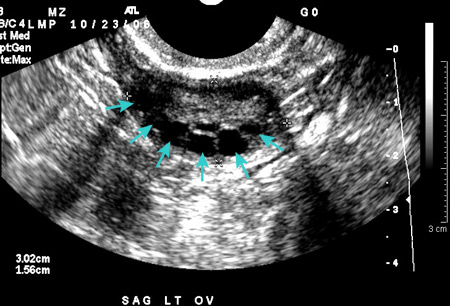闭经是一过性或永久性无月经来潮。关于闭经的定义尚无统一的标准,但根据月经初潮情况可分为原发性和继发性闭经,具体如下:[1]Practice Committee of the American Society for Reproductive Medicine. Current evaluation of amenorrhea. Fertil Steril. 2008 Nov;90(suppl 5):S219-25.
https://www.fertstert.org/article/S0015-0282(08)03527-9/fulltext
http://www.ncbi.nlm.nih.gov/pubmed/19007635?tool=bestpractice.com
尽管这两组间在性质上有重叠,但在诊断方法上却存在相当大的差异。
很少有研究评估目前的闭经患病率。20 世纪 90 年代的数据表明,约 3% 曾经月经规律的女性发生闭经。患病率可能在以下人群中偏高:大学生(3%-5%)、竞技性耐力运动员(5%-60%)、芭蕾舞演员(19%-44%)。[1]Practice Committee of the American Society for Reproductive Medicine. Current evaluation of amenorrhea. Fertil Steril. 2008 Nov;90(suppl 5):S219-25.
https://www.fertstert.org/article/S0015-0282(08)03527-9/fulltext
http://www.ncbi.nlm.nih.gov/pubmed/19007635?tool=bestpractice.com
[2]Gordon CM, Ackerman KE, Berga SL, et al. Functional hypothalamic amenorrhea: an Endocrine Society clinical practice guideline. J Clin Endocrinol Metab. 2017 May 1;102(5):1413-39.
https://academic.oup.com/jcem/article/102/5/1413/3077281?login=false
http://www.ncbi.nlm.nih.gov/pubmed/28368518?tool=bestpractice.com
在美国,原发性闭经的患病率为<0.1%,相较之下,继发性闭经的患病率则为 3%-4%。[1]Practice Committee of the American Society for Reproductive Medicine. Current evaluation of amenorrhea. Fertil Steril. 2008 Nov;90(suppl 5):S219-25.
https://www.fertstert.org/article/S0015-0282(08)03527-9/fulltext
http://www.ncbi.nlm.nih.gov/pubmed/19007635?tool=bestpractice.com
[2]Gordon CM, Ackerman KE, Berga SL, et al. Functional hypothalamic amenorrhea: an Endocrine Society clinical practice guideline. J Clin Endocrinol Metab. 2017 May 1;102(5):1413-39.
https://academic.oup.com/jcem/article/102/5/1413/3077281?login=false
http://www.ncbi.nlm.nih.gov/pubmed/28368518?tool=bestpractice.com
[3]Timmreck LS, Reindollar RH. Contemporary issues in primary amenorrhea. Obstet Gynecol Clin North Am. 2003 Jun;30(2):287-302.
http://www.ncbi.nlm.nih.gov/pubmed/12836721?tool=bestpractice.com
[4]Pettersson F, Fries H, Nillius SJ. Epidemiology of secondary amenorrhea: incidence and prevalence rates. Am J Obstet Gynecol. 1973 Sep 1;117(1):80-6.
http://www.ncbi.nlm.nih.gov/pubmed/4722382?tool=bestpractice.com
最常见的原因包括多囊卵巢综合征、下丘脑功能障碍、卵巢早衰和高泌乳素血症。[5]Polycystic ovary syndrome and secondary amenorrhoea. In: Edmonds K, ed. Dewhurst's textbook of obstetrics and gynaecology. 9th edition. Chichester: Wiley-Blackwell; 2018:513-33.
虽然继发性闭经的原因很多,但每种病因发病率都很低。总体而言,即便在高度专业化的医疗中心,因闭经就诊的患者比例也相对较低。
由于闭经通常是存在潜在的生殖疾病的临床体征之一,因此尽管继发性闭经的患病率较低,但需要对患者进行迅速、全面的评估,除非患者已妊娠、正处于哺乳期或正在使用激素避孕药物。在诊断和治疗上的延误可能对这类患者的未来造成负面影响。例如,对于多囊卵巢综合征和高胰岛素血症患者,调整行为和饮食结构可以预防随后出现心血管疾病。


登录或订阅即可浏览 BMJ Best Practice 临床实践完整内容